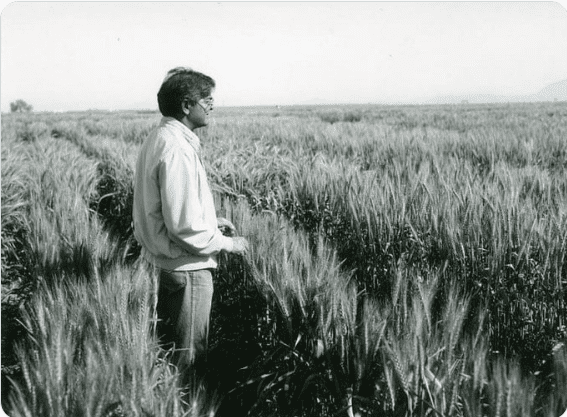Wheat! A harvest that has changed the course of human history. And, in the modern world, climate change has had a significant impact on the agriculture sector. Scientists are working 24 hours a day, 7 days a week to improve the crops we grow. In addition, the Indian government recently awarded Padma Bhushan (posthumously) to an Indian-Mexican agricultural scientist whose wheat variety has saved millions of lives around the world. Dr. Sanjaya Rajaram is the name of the scientist. The Padma Shri was bestowed upon him by the Indian government in 2001.
“We are really honoured that the government has honoured Sanjaya Rajaram for Science and Engineering and given him Padma Bhushan (Posthumous),” Sanjaya Rajaram’s son remarked after receiving the Padma Bhushan award.
Dr. Sanjaya Rajaram has trained approximately 700 scientists in this discipline to carry on his remarkable work. Let us delve into Dr. Sanjaya’s ground-breaking work, which is admired around the world.
Dr. Sanjaya Rajaram’s high-yielding and disease-resistant wheat cultivars
Wheat is farmed all across the world, and one factor that influences the crop’s production is the disease it carries. Dr. Sanjaya Rajaram produced high-yielding and disease-resistant wheat cultivars that farmers grow in 51 nations to increase wheat yields.
The scientist, who was born in India, is considered one of the best agricultural scientists of our day. Dr. Sanjaya Rajaram’s groundbreaking study has resulted in the invention of 480 wheat varieties that are now grown on six continents. The technique has had an impact on the world’s wheat crop, resulting in an increase of more than 200 million tonnes in global production.
Dr. Sanjaya Rajaram’s bio
Dr. Sanjaya Rajaram was born in 1943 in Uttar Pradesh, near a small farming community. Rajaram’s family made a living cultivating wheat, rice, and maize on a five-hectare farm. The small youngster was fascinated by his surroundings. Rajaram only went to the village for his primary and secondary education. Rajaram would travel five kilometers from his house to attend school during a period when nearly 96 percent of the rural population lacked formal education.
The young youngster never fell behind in his academics, eventually rising to the top of the Varanasi district’s student rankings. He was awarded a state scholarship to attend high school after that. He then moved to the College of Arts and Sciences in 1962. Jaunpur is pursuing his B.S. in agriculture at the University of Gorakhpur.
Rajaram received a scholarship from the Rotary Club of Narrabri to pursue his Ph.D. in plant breeding at the University of Sydney in 1963. Rajaram’s mentor and lecturer at the University of Sydney were Dr. I.A. Watson. Rajaram’s outstanding scientific career in wheat research began when Watson suggested him to Dr. Borlaug and Dr. Glenn Anderson at the International Maize and Wheat Improvement Center (CIMMYT) in Mexico.
Rajaram began his study and fieldwork at CIMMYT in 1969. (International Maize and Wheat Improvement Center). Borlaug invited Rajaram to succeed him as head of the CIMMYT wheat breeding team in 1972. The following year, according to Rajaram, was a period of learning during which he realized the diversity of wheat and began experimenting with cross-breeding winter and spring wheat varieties. Rajaram agreed with Borlaug in this area, emphasizing the significance of hands-on field research, science application, and a practical approach to attaining results.
Rajaram wheat types reached marginal areas such as small mountain plots in Pakistan and distant places in China, in addition to enhancing global wheat production. One of his most significant accomplishments was the development of aluminum-tolerant wheat that could thrive in Brazil’s acidic soils.
Through his notion of “slow rusting,” Rajaram developed wheat cultivars with long-term resistance to rusts, the most devastating disease to wheat on the planet. He employed a number of genes with moderate effects to decrease disease progression and hence reduce yield loss without forcing the rust pathogen to change and overcome resistance.
Rajaram also served as the Director of the Integrated Gene Management Program at the International Center for Agricultural Research in the Dry Areas (ICARDA), retiring in 2008 but continuing to serve as a special scientific advisor on overall wheat improvement initiatives.
In a personal email to Rajaram in 2007, Dr. Borlaug praised him, writing, “You have matured into the best present-day wheat scientist in the world… have made and continue to make significant contributions to increasing global wheat output… I’ve learned how to work effectively with political leaders from various ideologies in a variety of countries… and you’re a brilliant scientist.”
Dr. Rajaram died on February 17, 2021, at his home in Ciudad Obregón, a city in Mexico’s Sonora region. He has made a significant contribution to the agricultural sector. He will be regarded as one of the world’s greatest agricultural experts, whose work altered the planet.

